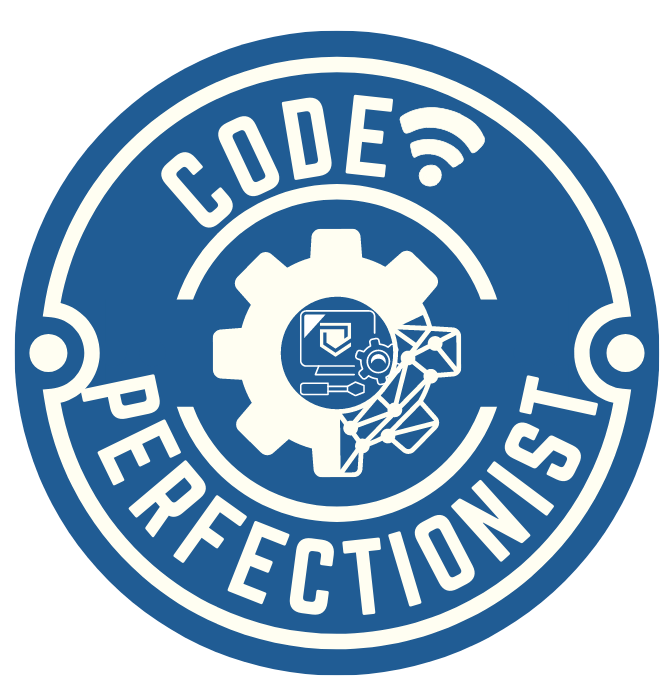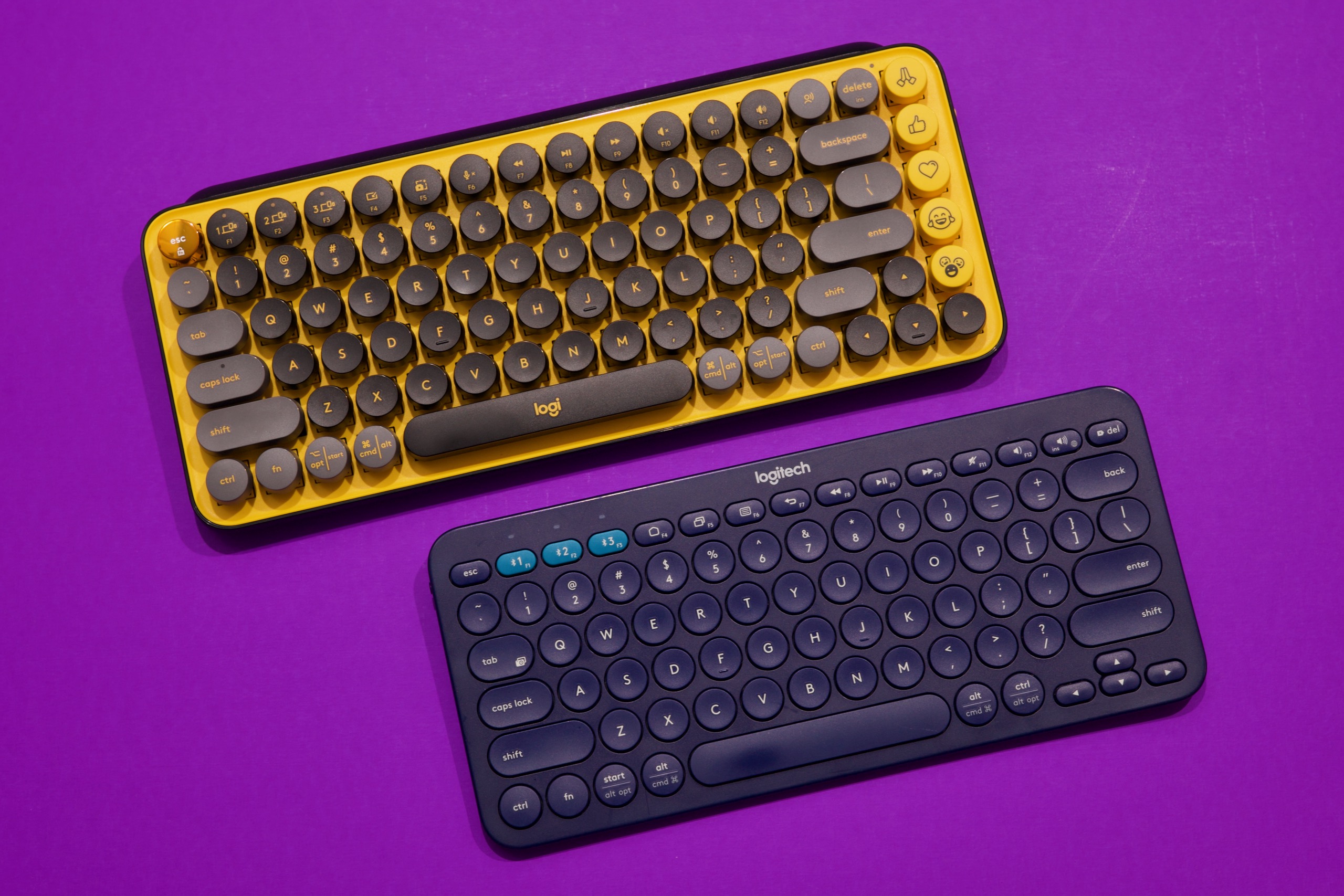ปฏิเสธไม่ได้ว่าในนิวเมติกระบบการกำเนิดลมอัดและระบบท่อจ่ายลม ถือเป็นหนึ่งในองค์ประกอบสำคัญที่มีส่วนช่วยให้กระบวนการเสร็จสมบูรณ์ และเชื่อว่าหลายคนอาจยังไม่เข้าใจ เนื่องจากข้อมูลส่วนใหญ่เน้นไปที่ระบบการทำงานโดยรวมทั้งหมด ดังนั้นเราจะมีข้อมูลเกี่ยวกับระบบกำเนิดลมและระบบท่อจ่ายลมมาฝาก นิวเมติกระบบกำเนิดลมและระบบท่อจ่ายลม คือ อะไร นิวเมติกระบบกำเนิดลมและระบบท่อจ่ายลม คือ อุปกรณ์ที่มีส่วนสำคัญในระบบนิวเมติกประกอบด้วยอุปกรณ์หลัก ๆ ทั้งหมด 4 อย่าง ได้แก่ เครื่องอัดลม ถังอัดลม ระบบส่งจ่ายอัดลม และระบบการเดินท่อลมแยกในโรงงาน โดยจะทำหน้าที่ประสานกันเพื่อให้ได้ความดันในระดับที่เหมาะสมสำหรับการใช้ในระบบ รายละเอียดอุปกรณ์ที่เกี่ยวข้อง เพื่อทำความรู้จักนิวเมติกระบบกำเนิดลมอัดและระบบท่อจ่ายลมทั้ง 4 อย่างที่เรากล่าวไปข้างต้น
หลายๆ คนอาจจะไม่รู้ว่าการเช่าเครื่องทำความสะอาดนั้นมีสำหรับทุกๆ คน ส่วนหนึ่งก็เพราะว่าเครื่องทำความสะอาดที่ทันสมัยค่อนข้างมีราคาสูงอย่างยิ่ง อาจจะกล่าวได้ว่ายิ่งราคาแพงมากเท่าใดก็ยิ่งทำให้หลายๆ คนไม่กล้าซื้อใช้ด้วยตนเองมากขึ้นเท่านั้น อย่างไรก็ดีสำหรับใครที่อยากรู้ How to เช่าเครื่องทำความสะอาดนั้นมีอะไรบ้าง พร้อมแล้วมาดูกันเลย 1.มองหาบริษัทให้เช่าเครื่องทำความสะอาด สำหรับวิธีการแรกที่จะช่วยให้การทำความสะอาดเป็นเรื่องที่ง่ายดายก็คือ การมองหาบริษัทที่ให้เช่าเครื่องทำความสะอาด เพราะในปัจจุบันนี้ก็มีหลายต่อหลายบริษัทในท้องตลาด ตามแต่เราต้องการจะเลือก โดยฉพาะอย่างยิ่งการมองหางบประมาณและราคา สำหรับการมองหางบประมาณและราคาที่ดีที่สุดนั้น จะต้องเน้นไปที่การพิจารณาอย่างละเอียดและถี่ถ้วน เพื่อให้มั่นใจได้ว่าจะได้บริษัทที่ดีอย่างแท้จริง 2.วัดพื้นที่ภายในบ้าน หลายๆ คนคงจะสงสัยใช่หรือไม่ว่าการวัดพื้นที่ภายในบ้านนั้นสำคัญอย่างไรกันแน่ ต้องขอบอกเลยว่าการวัดพื้นที่ภายในบ้านจะช่วยให้คุณเลือกเครื่องมือได้ถูกต้องนั่นเอง เครื่องมือที่ถูกต้องสำหรับหลายๆ
ในโลกของการใช้บุหรี่ไฟฟ้าที่มีความหลากหลายและเติบโตไปเรื่อย ๆ แบรนด์ที่โดดเด่นเรื่อยมาคือ Smok ซึ่งเป็นผู้นำด้านนวัตกรรมและคุณภาพสูงในอุตสาหกรรมบุหรี่ไฟฟ้า สำหรับผู้ที่ชื่นชอบการใช้บุหรี่ไฟฟ้าและต้องการมีการใช้ชีวิตที่ดีต่อสุขภาพมากขึ้น ต่อไปนี้เราจะพาไปหาคำตอบว่าทำไมบุหรี่ไฟฟ้า Smok กลายเป็นหนึ่งในตัวเลือกได้อย่างไรในผู้ที่ต้องการบุหรี่ไฟฟ้าสำหรับดูแลสุขภาพที่ดีขึ้น เพื่อเข้าใจใจความสำคัญในบริบทมากขึ้น การสูบบุหรี่แบบเดิมนั้น เป็นสาเหตุให้เกิดความเสี่ยงต่อสุขภาพอย่างมาก เช่นโรคหัวใจ, โรคหลอดเลือดสมอง และมะเร็งปอด ในทางกลับกัน การสูบบุหรี่ไฟฟ้าถือเป็นทางเลือกที่มีความเสี่ยงน้อยกว่าซึ่งบุหรี่ไฟฟ้า Smok ได้รับความนิยมสูงเนื่องจากความปลอดภัยที่ได้ถูกออกแบบมา ความน่าสนใจของ บุหรี่ไฟฟ้า Smok ไม่เพียงแค่อยู่ที่การออกแบบด้วยรูปทรงที่ทันสมัย แต่ยังมีความใส่ใจในมาตรฐานความปลอดภัยของผลิตภัณฑ์ทั้งหมด ซึ่งสอดคล้องกับความต้องการที่ผู้ใช้บุหรี่ไฟฟ้าหลายคนให้ความสำคัญกับสุขภาพ
แป้นพิมพ์ หรือ คีย์บอร์ด เป็นอุปกรณ์ที่สำคัญสำหรับการใช้งานคอมพิวเตอร์ เมื่อพูดถึงแป้นพิมพ์แบรนด์ที่ยอดนิยมก็คงจะเป็น “Logitech” อย่างแน่นอน เพราะคีย์บอร์ด Logitech มีหลากหลายรุ่นให้เลือกใช้งาน ครอบคลุมตั้งแต่คีย์บอร์ดพิมพ์งานทั่วไปจนถึงคีย์บอร์ดสำหรับเกมเมอร์มืออาชีพ ผลิตจากวัสดุมีคุณภาพ ทนทาน ดีไซน์สวยทันสมัยและราคาสมเหตุสมผล จึงได้รับความนิยมจากผู้คนหลากหลายประเทศทั่วโลก Logitech รุ่น G613 เป็นแป้นพิมพ์ขนาด Full-size เอาไว้ใช้ในการทำงานหรือเล่นเกม Logitech G613 เป็นตัวเลือกที่คุ้มราคาและครอบคลุมการใช้งานได้ค่อนข้างหลากหลายเลยทีเดียว จุดที่ทำให้คีย์บอร์ดตัวนี้มาเป็นอันดับหนึ่งก็คือ
พลังงานชีวมวลเป็นส่วนสำคัญของการผลักดันสู่ความยั่งยืนของโลกและลดการพึ่งพาแหล่งพลังงานที่ไม่หมุนเวียน ชีวมวลหมายถึงอินทรียวัตถุใดๆ ก็ตามที่สามารถนำมาใช้เพื่อผลิตพลังงานได้ เช่น ของเสียจากการเกษตร ของเหลือจากป่าไม้ และพืชพลังงาน การเติบโตของพลังงานชีวมวลนำมาซึ่งโอกาสมากมายสำหรับการผลิตพลังงานหมุนเวียน แต่ความท้าทายบางอย่างยังคงมีอยู่ ในบทความนี้ เราจะสำรวจความท้าทายและโอกาสสำหรับโรงงานชีวมวลและกลยุทธ์ในการสร้างอนาคตที่ยั่งยืน ความท้าทายสำหรับโรงงานชีวมวล โอกาสสำหรับโรงงานชีวมวล การบรรเทาการเปลี่ยนแปลงสภาพภูมิอากาศ โรงงานชีวมวลมีส่วนสำคัญในการลดการปล่อยก๊าซคาร์บอนและบรรเทาการเปลี่ยนแปลงสภาพภูมิอากาศ การใช้พลังงานชีวมวลช่วยลดการปล่อยก๊าซเรือนกระจก แทนที่ทรัพยากรที่มีอยู่อย่างจำกัดซึ่งก่อให้เกิดความเสียหายต่อสิ่งแวดล้อมอย่างมีนัยสำคัญ จะช่วยสนับสนุนเป้าหมายในการบรรลุ SDGs อย่างมีนัยสำคัญ กลยุทธ์การสร้างอนาคตที่ยั่งยืน การเพิ่มประสิทธิภาพและผลตอบแทนสูงสุด การเพิ่มประสิทธิภาพและผลตอบแทนสูงสุดเป็นสิ่งสำคัญในการสร้างอนาคตที่ยั่งยืนสำหรับพลังงานชีวมวล โรงงานชีวมวลต้องนำเทคโนโลยีที่ทันสมัยและเป็นนวัตกรรมมาใช้เพื่อลดของเสีย ลดค่าใช้จ่ายด้านพลังงาน
ประกันชั้น 2 หนึ่งในประเภทของประกันภัยภาคสมัครใจที่เราสามารถเลือกซื้อเพื่อให้ได้ความคุ้มครองในการใช้รถใช้ถนนที่ครอบคลุมมากยิ่งขึ้น แต่สำหรับใครที่ประกันเดิมใกล้หมดอายุแล้วต้องการจะซื้อประกันใหม่และกำลังอยากรู้ว่าประกันชั้น 2 ราคาเท่าไหร่และมีเคล็ดลับหรือปัจจัยอะไรบ้างที่จะทำให้เราสามารถซื้อประกันชั้น 2 ราคาถูกได้ ขั้นตอนแรกของที่จะทำให้ประกันชั้น 2 ราคาเป็นมิตรกับเงินในกระเป๋าได้นั้นคือการศึกษารายละเอียดเกี่ยวกับเงื่อนไขความคุ้มครองจากบริษัทประกันภัยหรือตัวแทนหลายๆ ที่ เพื่อที่จะได้เป็นการเปิดตาให้สามารถมองเห็นว่าข้อเสนอของบริษัทใดมีความน่าสนใจและสามารถตอบโจทย์ความต้องการเบื้องต้นได้บ้าง ซึ่งการศึกษารายละเอียดนั้นยังเป็นการป้องกันปัญหาหรือความผิดพลาดที่อาจเกิดตามมาในภายหลังได้ดีอีกด้วย ขั้นตอนต่อมาเมื่อเราเก็บเกี่ยวข้อมูลรายละเอียดจากตัวเลือกต่างๆ มาได้มากพอสมควรแล้ว คือการเปรียบเทียบราคา เพื่อหาตัวเลือกที่ตอบโจทย์กับงบประมาณของเราได้ดีที่สุด เพราะแต่ละบริษัทถึงแม้จะมีเงื่อนไขความคุ้มครองที่เหมือนหรือใกล้เคียงกันแต่ก็ใช่ว่าราคาจะเท่ากันเสมอไป ดังนั้น จึงต้องมีการเปรียบเทียบราคา ซึ่งในปัจจุบันเราสามารถทำได้ด้วยตัวเองและไม่ว่าเราจะอยู่ที่ไหนขอแค่มีอินเทอร์เน็ตก็สามารถทำได้คือการใช้ตัวช่วยเปรียบเทียบราคาบนเว็บไซต์ซึ่งจะมีทั้งเว็บไซต์ของบริษัทประกันภัยเองโดยตรงและเว็บไซต์ของนายหน้าต่างๆ นับว่าการทำงานของระบบนั้นมีคุณภาพไม่แพ้พนักงานมาให้บริการเอง ขั้นตอนนี้จำเป็นต้องใช้เวลาและความละเอียดรอบคอบอยู่ไม่น้อยหลังจากที่เราได้แผนการคุ้มครองที่จัดว่าเป็นตัวเลือกที่มีคุณสมบัติดีพอแล้วนั้น เราควรต้องมีการปรับแต่งเงื่อนไขความคุ้มครองด้วย
ในปัจจุบันนี้ไอทีนั้นก็ถือว่าเป็นเรื่องหนึ่งที่ดีและสำคัญกับเราเองอย่างมากมายที่สุดเลยเพราะว่าในเรื่องของไอทีนั้นก็จะทำให้เราเป็นคนที่มีความสุขที่สุดเพราะว่าไอทีจะทำให้เราได้ยิ่งที่จะเรียนรู้และหาความรู้เกี่ยวกับไอทีให้มากๆด้วยนั้นเองเพราะว่าในเรื่องของไอทีนั้นก็มีมากมายให้เราได้เลือกสนใจกันอย่างที่สุดเลย ไม่ว่าจะเป็นในส่วนของคอมพิวเตอร์ ต้องบอกเลยว่าเรื่องของคอมพิวเตอร์นั้นก็เป็นเรื่องที่เราก็จะต้องหาข้อมูลในเรื่องขององค์ประกอบของคอมพิวเตอร์ด้วยและเราก็ควรที่จะต้องรู้ด้วยว่าในคอมพิวเตอร์นั้นสามารถที่จะใช้ซอร์ฟแวร์อะไรบ้างเพราะสิ่งเหล่านี้จะช่วยทำให้เรานั้นยิ่งมีความสุขอย่างมากมายเลยและที่สำคัญการที่เราได้เรียนรู้ในเรื่องของไอทีจะส่งผลที่จะทำให้เราได้เป็นคนที่มีความรู้ยิ่งขึ้นด้วย เรื่องของไอทีแน่นอนว่าเป็นเรื่องที่ยากไม่ใช่เรื่องที่ง่ายเลยทั้งนี้ถ้าเราได้รู้จักที่จะหาข้อมูลและหาอ่านอะไรที่อัพเดตอยู่บ่อยๆแล้วนั้นก็จะทำให้เรายิ่งมีความสุขขึ้นอีกด้วยและที่สำคัญเรื่องของไอทีนั้นจะทำให้เราได้เป็นคนที่มีความรู้มากขึ้นด้วยเพราะยิ่งเรามีความรู้มากขึ้นมากเท่าไหร่ก็จะส่งผลที่ดีให้กับตัวเราเองอย่างมากมายด้วย เรื่องของไอทีนั้นไม่ใช่เรื่องที่ยากเพียงแต่ว่าเราเองจะต้องให้ความสนใจให้มากๆเพราะว่าไอทีสามารถที่จะทำเงินให้กับเราได้เป็นอย่างดีเลยแต่ทั้งนี้เราก็ควรที่จะต้องอย่ามองข้ามไปเลยเพราะว่าการที่เราไม่มองข้ามไปนั้นก็จะส่งผลที่ดีให้กับตัวเราเองอย่างมากด้วย และที่สำคัญเรื่องของไอทีจะทำให้เราได้ยิ่งมีความสุขกันอย่างมากมายด้วยเพราะฉะนั้นเรื่องนี้จึงถือว่าเป็นเรื่องที่ดีเพราะอย่างน้อยในเรื่องของไอทีจะทำให้เราไม่ต้องเครียดแถมก็ยังสามารถที่จะสร้างรายได้ให้กับตัวเราเองได้อย่างน้อยหากเราเรียนรู้ในเรื่องของไอทีแล้วสามารถที่จะทำการซ่อมเองได้ก็เป็นสิ่งที่ดีอย่างมากเลย เรื่องของไอทีในตอนนี้จึงเป็นเรื่องที่หลายๆคนก็ต้องการและที่สำคัญก็จะมองข้ามไปไม่ได้เลยและถ้าหากเรารู้จักที่จะไม่มองข้ามไปแล้วนั้นก็จะทำให้เรายิ่งมีความสุขในชีวิตแล้วก็จะสามารถนำความรู้ที่เรามีนั้นไปใช้ประโยชน์ได้อย่างมากมายที่สุดเลย สิ่งนี้จึงถือว่าเป็นเรื่องที่เราเองก็ควรที่จะต้องอย่ามองข้ามไปเลยจึงจะเป็นเรื่องที่ดีอย่างที่สุด
ไอทีคือเทคโนโลยีที่ในสมัยนี้นั้นก็เป็นเรื่องหนึ่งที่สำคัญอย่างมากเลยเพราะว่าในเรื่องของไอทีนั้นก็จะช่วยทำให้เราได้รู้จักที่จะเรียนรู้กันอย่างมากมายาเลยและที่สำคัญในเรื่องของไอทีนั้นก็มีให้เราได้เลือกทำกันอย่างมากอีกด้วยและที่สำคัญในเรื่องของไอทีเราสามารถที่จะหาข้อมูลความรู้จากแหล่งต่างๆได้เลย ไม่ว่าเราจะอยากรู้ในเรื่องไหนที่เกี่ยวกับไอทีแล้วนั้นเราก็สามารถที่จะหาความรู้ได้ไม่ยากเลยและที่สำคัญเรื่องของไอทีนั้นจะช่วยทำให้เรายิ่งมีความสุขที่สุด อย่างน้อยไอทีจะทำให้เราได้มีความรู้มากขึ้นและได้กล้าที่จองลองทำอะไรใหม่ๆได้อีกด้วย การที่เราใช้โทรศัพท์หรือใช้คอมพิวเตอร์นั้นก็จะถือว่าเป็นเรื่องที่สำคัญอีกด้วย อย่างน้อยสิ่งเหล่านี้ก็ถือว่าเป็นเทคโนโลยีที่ดีและสำคัญต่อเราเองอย่างมากมายเลย เรื่องของไอทีนั้นเป็นเรื่องที่เราเองอาจจะต้องใช้ความรู้ให้มากๆเพราะยิ่งเรามีความรู้มากเท่าไหร่ก็เป็นเรื่องที่ดีสำหรับเราเพราะเราก็จะได้รู้ในพื้นฐานข้อมูลที่เกี่ยวกับไอทีด้วยนั้นเอง และแน่นอนว่าเรื่องของเทคโนโลยีนั้นจึงเป็นเรื่องที่สำคัญและจำเป็นอย่างมากที่สุดเพราะการที่เราตามเทคโนโลยีทันนั้นก็จะทำให้เรามีความรู้เพิ่มมากยิ่งขึ้นด้วย เราจึงควรที่จะต้องอย่าละเลยหรือมองข้ามไปเลยกับเรื่องของไอทีเพราะยิ่งเราได้ให้ความสำคัญกับไอทีได้มากเท่าไหร่ก็จะช่วยทำให้เรายิ่งมีความสุขเพราะอย่างน้อยเรื่องของไอทีจะเป็นสิ่งที่จะช่วยทำให้เราได้เรียนรู้และพัฒนาที่จะใช้งานในรูปแบบไอทีใหม่ๆเพื่อให้เข้าถึงเทคโนโลยีที่ทันสมัยในตอนนี้อีกด้วย ทุกๆอย่างจึงถือว่าเป็นเรื่องที่เราเองก็ควรที่จะต้องให้ความสนใจมากๆและก็ควรที่จะต้องใส่ใจให้มากที่สุดเพราะเรื่องของเทคโนโลยีจึงเป็นเรื่องที่เราก็จะมองข้ามไปไม่ได้อีกด้วยนั้นเอง หากเราได้รู้จักที่จะให้ความสนใจกับเรื่องของเทคโนโลยีแล้วนั้นก็จะทำให้เรายิ่งได้ใช้เทคโนโลยีที่ไวขึ้นและทันสมัยขึ้นด้วย เรื่องของเทคโนโลยีจึงจัดว่าเป็นเรื่องที่ดีและสำคัญกับเราเองอย่างมากและถ้าหากเราได้รู้จักที่จะให้ความสำคัญในตรงนี้แล้วเราเองก็จะยิ่งได้มีความรู้เก็บเกี่ยวมากขึ้นด้วยแล้วก็จะได้นำเทคโนโลยีไปใช้งานได้อย่างถูกต้องที่สุดด้วย เรื่องนี้จึงเป็นเรื่องที่เราเองก็ควรที่จะต้องให้ความสนใจมากๆและอย่ามองข้ามไปเลยจึงจะส่งผลที่ดีอย่างที่สุด
สำหรับผู้ใช้โทรศัพท์มือถือทุก ๆ คนจะเห็นได้เลยว่า เมื่อเราใช้งานแอปพลิเคชันอื่น ๆ ไม่ว่าจะเป็น แอปพลิเคชันเกม แอปพลิเคชันแต่งรูป หรือแอปพลิเคชันอื่น ๆ อีกมากมาย มักจะมีให้เลือกล็อคอินด้วยเฟซบุ๊กหลากหลายแอปด้วยกัน เนื่องจากจะเพิ่มความสะดวก ไม่ต้องจำรหัสผ่านเยอะ ๆ แถมยังสามารถเชื่อมต่อกับเพื่อน ๆ ในแพลตฟอร์มอื่นได้อย่างรวดเร็ว แต่ทั้งนี้การล็อคอินด้วยเฟซบุ๊กในแอปพลิเคชันอื่น ๆ จะมาข้อเสียเช่นเดียวกัน แต่จะมีข้อเสียในเรื่องใดบ้างนั้น ไปดูกันเลย ข้อเสียของการล็อคอินแอปพลิเคชันอื่น ๆ












